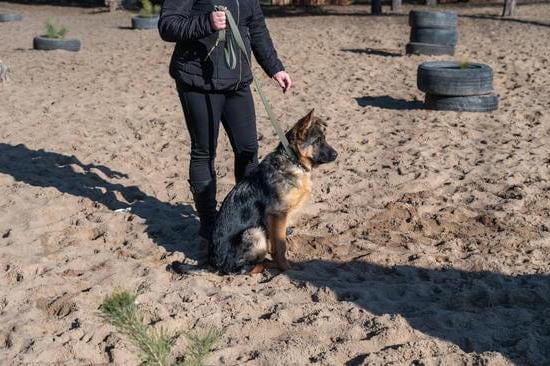Are you wondering how to train a dog with an electric fence? Electric fence training for dogs has become a popular and effective method for pet owners to establish boundaries and keep their furry friends safe. By understanding the concept of electric fence training, you can ensure a successful and safe experience for both you and your dog.
Using an electric fence for dog training comes with numerous benefits. Not only does it provide a secure way to contain your dog within designated areas, but it also allows them the freedom to roam and play without the restrictions of traditional physical barriers. With the right approach, electric fence training can be a valuable tool in teaching your dog obedience and boundary awareness.
Before embarking on electric fence training, it’s important to carefully consider the type of electric fence that will work best for your dog. Factors such as size, breed, and temperament play a significant role in choosing the appropriate system.
Additionally, adequate preparation and understanding are essential before introducing your dog to this form of training. In the following sections, we will delve into the various aspects of electric fence training for dogs, guiding you through the process from beginning to end.
The Benefits of Using an Electric Fence for Dog Training
Electric fences have become a popular option for dog owners looking to train their pets and keep them within a certain boundary. There are several benefits to using an electric fence for dog training, making it an attractive choice for many pet owners.
Effective Boundary Control
One of the main benefits of using an electric fence for dog training is its effectiveness in controlling boundaries. Unlike traditional fences, which can be dug under or jumped over by dogs, electric fences create a virtual barrier that is difficult for dogs to escape. This allows pet owners to provide their dogs with freedom to roam within a certain area without the risk of them running off or getting lost.
Customizable Boundaries
Another advantage of electric fences is their ability to be customized to fit the specific needs and layout of a property. Whether it’s creating a large play area for your dog or protecting certain areas of your yard, electric fences can be tailored to accommodate various shapes and sizes, providing flexibility that traditional fencing may not offer.
Cost-Effective Solution
Compared to installing a traditional fence, electric fences are often more cost-effective and easier to maintain. They require less material and labor for installation, making them a budget-friendly option for dog owners. Additionally, electric fences don’t obstruct views or spoil the aesthetic appeal of the yard, making them a visually appealing choice as well.
When considering how to train a dog with electric fence, it’s important to understand these benefits as they can play a key role in the success of your training efforts.
Choosing the Right Electric Fence for Your Dog
When it comes to training your dog with an electric fence, selecting the right fence system is crucial for the success of the training process. There are several factors to consider before choosing an electric fence for your dog, and taking the time to assess these considerations can make a significant difference in the effectiveness of the training.
Size and Type of Property
One of the primary factors to consider when choosing an electric fence for your dog is the size and type of property you have. The layout of your property will determine the type of electric fence system that would work best for your specific needs. For larger properties, an in-ground electric fence may be more suitable, while smaller properties may benefit from a wireless or above-ground fence system.
Dog’s Size and Temperament
Another important consideration is your dog’s size and temperament. Different electric fences are designed with various levels of correction strength, so it’s essential to choose a system that aligns with your dog’s size and behavior. For example, a smaller dog may require a milder correction level compared to a larger, more energetic breed.
Additional Features
It’s also essential to consider any additional features that may come with the electric fence system. Some systems offer options such as adjustable boundaries, remote training capabilities, or compatibility with multiple dogs. Evaluating these features based on your specific needs can help you make an informed decision when choosing the right electric fence for your dog.
By carefully considering these factors, you can select an electric fence that is well-suited for your property and tailored to your dog’s personality and training requirements. This thoughtful approach to choosing the right electric fence will set the stage for a successful training experience for both you and your beloved pet.
Preparing Your Dog for Electric Fence Training
When it comes to training your dog with an electric fence, it’s important to ensure that your furry friend is well-prepared for the experience. Here are some tips and tricks to help you prepare your dog for electric fence training:
1. Establish a strong recall command: Before introducing your dog to the electric fence, make sure that they have a reliable recall command in place. This will help them understand boundaries and respond appropriately when encountering the electric fence.
2. Use positive reinforcement: Associating the electric fence with positive experiences is crucial for successful training. Use treats, praise, and playtime to create a positive association with the boundary created by the electric fence.
3. Gradual introduction: Take things slow when introducing your dog to the electric fence. Start by allowing them to explore the boundary on a leash before activating the system. This will help them understand the invisible barrier and reduce any anxiety or fear associated with it.
By taking these steps, you can ensure that your dog is well-prepared for electric fence training and increase their chances of success in understanding and respecting boundaries.
Remember, patience and consistency are key when training a dog with an electric fence system, so be sure to take your time and always prioritize your dog’s safety and well-being throughout the process.
The Training Process
Introducing your dog to an electric fence requires patience, consistency, and positive reinforcement. It is important to take the time to properly train your dog to understand the boundaries set by the electric fence. Here is a step-by-step guide to help you introduce your dog to the electric fence:
1. Start with Basic Obedience Training: Before introducing the electric fence, ensure that your dog has a good understanding of basic obedience commands such as sit, stay, and come. This will make it easier for your dog to learn the boundaries of the electric fence.
2. Introduce Your Dog to the Boundaries: Once your electric fence system is installed, it’s time to introduce your dog to the boundaries. Use flags or other visual markers to clearly indicate where the boundary line is located.
3. Use Positive Reinforcement: When training your dog with the electric fence, always use positive reinforcement. Reward your dog with treats or praise when they approach the boundary but do not cross it.
4. Teach Your Dog about Warning Signals: Most electric fences emit a warning signal such as a beep before delivering a mild static correction. During training, allow your dog to hear and experience the warning signal without receiving a correction.
5. Supervise Your Dog’s Interactions with the Fence: It’s important to closely supervise your dog during this training process. This will allow you to correct any unwanted behavior and provide immediate positive reinforcement when your dog responds appropriately.
Engaging in regular training sessions and being consistent in implementing these steps will help you successfully introduce your dog to an electric fence system in a safe and effective manner.
Remember that every dog learns at their own pace, so be patient and persistent in helping them understand the boundaries set by the electric fence.
Common Mistakes to Avoid During Electric Fence Training
When using an electric fence to train your dog, it’s essential to be aware of common mistakes that can hinder the effectiveness of the training and potentially harm your pet. Understanding these mistakes and how to avoid them will ensure a successful and safe training experience for your dog.
One common mistake owners make is not properly introducing their dog to the electric fence system. It’s crucial to take the time to familiarize your pet with the boundaries and the consequences of crossing them. Additionally, some owners make the mistake of not adjusting the settings of the electric fence collar according to their dog’s size and temperament, leading to unnecessary discomfort or fear in their pets.
Another mistake to avoid is relying solely on the electric fence without incorporating traditional obedience training. While an electric fence serves as a deterrent, it should be complemented with proper obedience training to reinforce boundaries and commands. Furthermore, neglecting regular maintenance checks on the electric fence system can lead to malfunctions or weak signals, compromising its effectiveness in keeping your dog safe within the designated area.
Properly addressing these common mistakes is crucial for successful electric fence training for your dog. By ensuring a thorough introduction, adjusting settings appropriately, integrating obedience training, and maintaining the system regularly, you can create a safe and effective environment for your pet while using an electric fence.
| Common Mistake | How to Avoid |
|---|---|
| Improper introduction | Familiarize pet with boundaries and consequences; start with low levels of correction |
| Inappropriate collar settings | Adjust according to size and temperament of dog; ensure comfort and safety |
| Neglecting obedience training | Combine with traditional obedience training for reinforcement of boundaries and commands |
Maintaining the Effectiveness of the Electric Fence System
Once you have successfully trained your dog to understand and respect the boundaries set by an electric fence, it’s important to maintain the effectiveness of the system to ensure continued safety and security for your pet. Regular maintenance and proper care of the electric fence will help prevent malfunctions and keep your dog safe within the designated area.
One essential aspect of maintaining an electric fence system is checking the physical components regularly. This includes inspecting the wires, posts, and any other hardware to ensure they are in good condition and free from damage. Weather conditions, wildlife, and regular wear and tear can all impact the integrity of these physical components. It’s recommended to conduct a visual inspection every month or after severe weather events.
Another crucial factor in maintaining an effective electric fence system is monitoring the battery life of any remote transmitters or collars used for training. Dead batteries can render the system useless, allowing your dog to roam beyond safe boundaries without consequence. Make it a habit to check and replace batteries as needed, following manufacturer recommendations for each specific device.
It’s also important to periodically test the functionality of the entire electric fence system. This means ensuring that all wires are properly transmitting signals, that power sources are functioning correctly, and that there are no breaks or weak spots in the perimeter. Regular testing can help identify potential issues before they compromise your dog’s safety.
| Electric Fence Maintenance | Data |
|---|---|
| Physical Component Inspection | Inspect wires, posts, hardware monthly |
| Battery Monitoring | Check and replace batteries as needed |
| System Functionality Testing | Regularly test wires, power sources, and perimeter for proper functioning |
Conclusion
In conclusion, training your dog with an electric fence can be a successful and safe experience when done properly. It is important to understand the concept of electric fence training and the benefits it can provide for both you and your pet.
By choosing the right electric fence for your dog and following a step-by-step guide to introducing them to the system, you can ensure that they stay safe within their boundaries while still having the freedom to roam.
One of the key factors in ensuring a successful electric fence training experience for your dog is proper preparation. Taking the time to acclimate your pet to the system and using positive reinforcement during the training process can make all the difference. Additionally, it’s important to avoid common mistakes such as using excessive correction or not maintaining the effectiveness of the system.
By following these tips and tricks, you can create a secure environment for your dog while providing them with the freedom they need to thrive. Remember that patience is key when training with an electric fence, and always prioritize your pet’s safety and well-being throughout the process. With dedication and proper training techniques, you can successfully train your dog using an electric fence.
Frequently Asked Questions
How Long Does It Take to Train a Dog on an Electric Fence?
The time it takes to train a dog on an electric fence can vary depending on the dog’s temperament and how consistent the training is. Generally, it can take several weeks of training sessions for a dog to understand and respect the boundaries set by the electric fence.
Are Electric Fences Effective for Dogs?
Electric fences can be effective for dogs when used correctly. They provide a safe way to contain and control your dog’s movements within a designated area. However, effectiveness also depends on proper installation, training, and regular maintenance of the electric fence system.
How Do I Make My Dog Not Scared of Electric Fence?
To make your dog less scared of the electric fence, start by introducing them to the boundary gradually and with positive reinforcement. Use treats, toys, and praise to create positive associations with the fence boundaries. Gradually increase exposure while monitoring your dog’s comfort level to help them overcome their fear.

Welcome to the blog! I am a professional dog trainer and have been working with dogs for many years. In this blog, I will be discussing various topics related to dog training, including tips, tricks, and advice. I hope you find this information helpful and informative. Thanks for reading!





